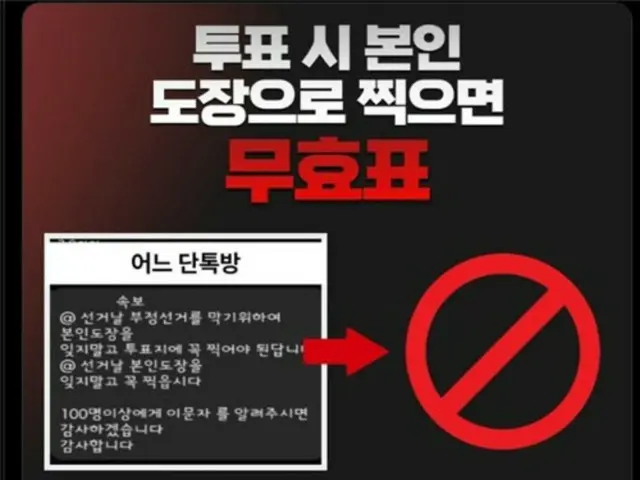On the 26th, in the open chat rooms of SNS platform X and KakaoTalk,
There are claims along the lines of, "If identification is checked when voting, and a personal seal is used instead of a signature, and the personal seal is then used on the ballot paper, then fraudulent elections can be prevented."
These claims are mainly spread through anonymous accounts, specific YouTube channels, KakaoTalk group chat rooms, YouTube comments, etc.
However, this is absolutely not true. In accordance with the Public Offices Election Law and the regulations of the Central Election Commission, voting must be done with a voting tool (stamp) provided by the Commission.
The use of personal items such as stamps or pens is prohibited. If, as in this case, a personal stamp or other identification mark is left on the ballot, it will violate the principle of secret balloting and will be treated as an invalid vote.
There is also information that suggests that voters should fold their ballot paper 5-6 times before casting their vote at the polling station, then open it again and cast their vote. The folded ballot paper can then be placed in an "automatic sorting machine."
However, the election commission has already been sorting the ballots in a sorting machine since the last general election and then recounting them manually, so the number of times the ballots have been folded has increased.
Other allegations include the large difference in vote percentage between early and final voting, which is evidence of election fraud, and the use of "cabbage leaf" ballots (ballots printed on top of each other).
Claims that the ballot papers are hard and have no fold marks are evidence of election fraud, and that the Election Commission is facilitating election fraud by hiding CCTV (security cameras) at polling stations have also spread through social media.
The Supreme Court and the National Election Commission explained that the difference in voter turnout between the advance vote and the actual vote was a natural phenomenon caused by voter tendencies and the time of day the vote was cast.
People are being fooled by false information like this that spreads on social media and online communities.
In order to avoid creating invalid votes, voters must check their voting information themselves via the official website of the election commission.
2025/05/26 11:29 KST
Copyrights(C) Edaily wowkorea.jp 85

